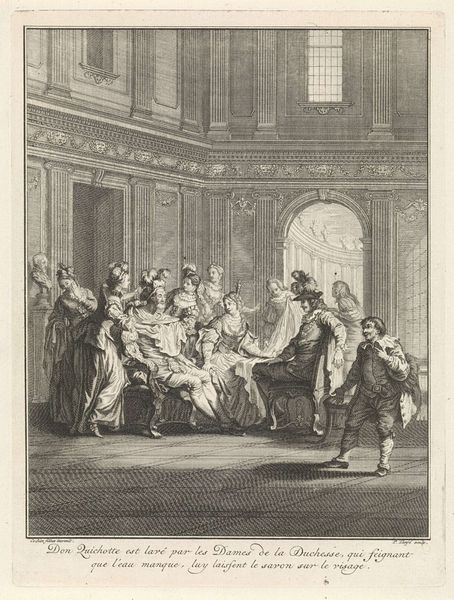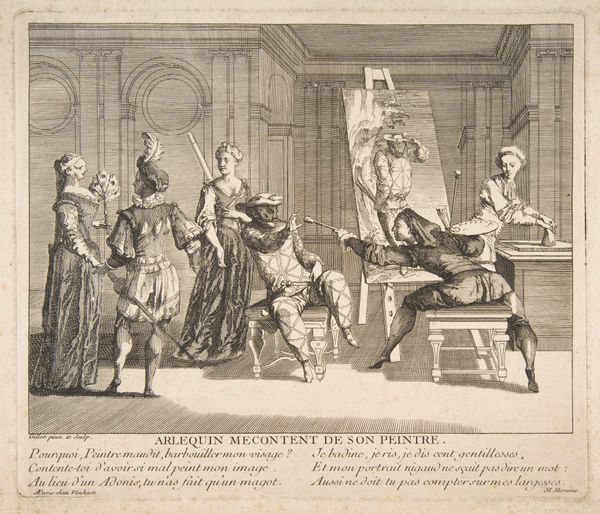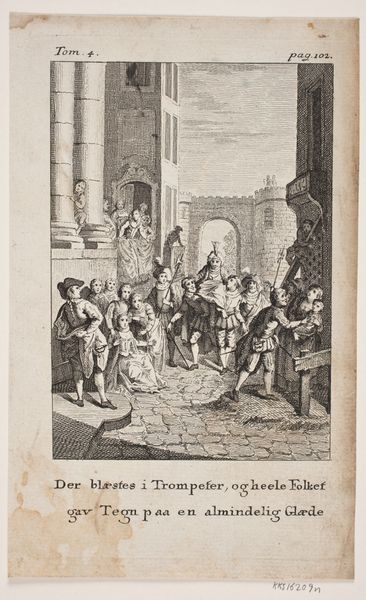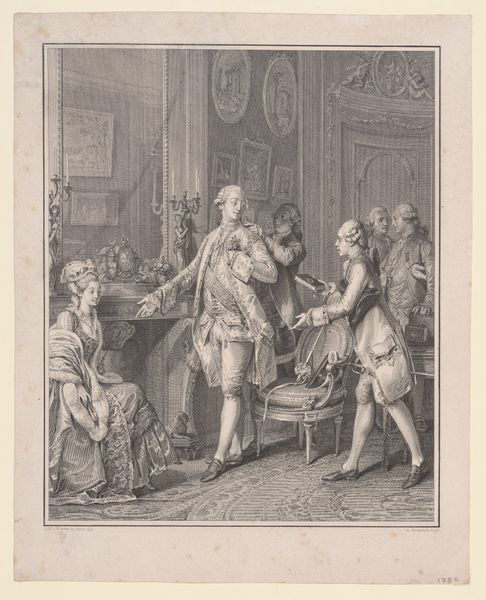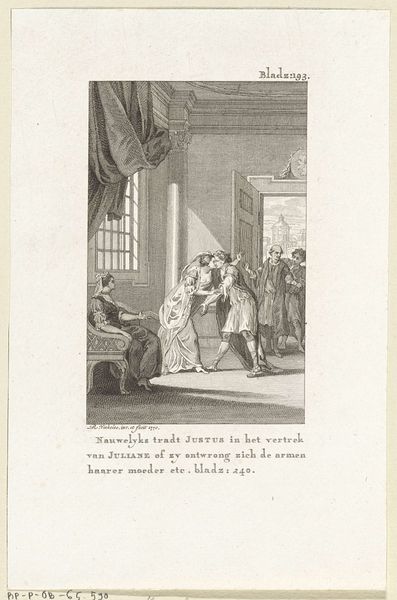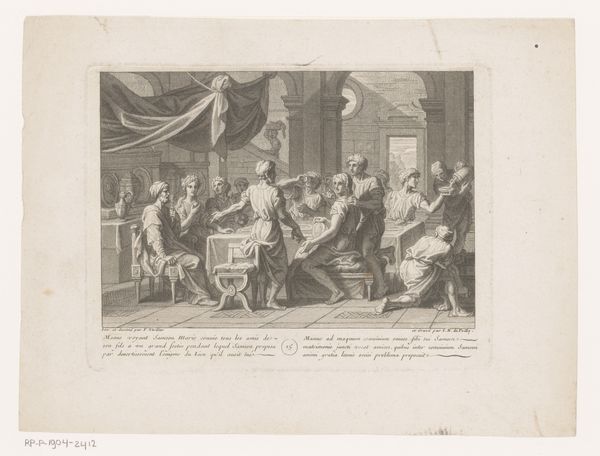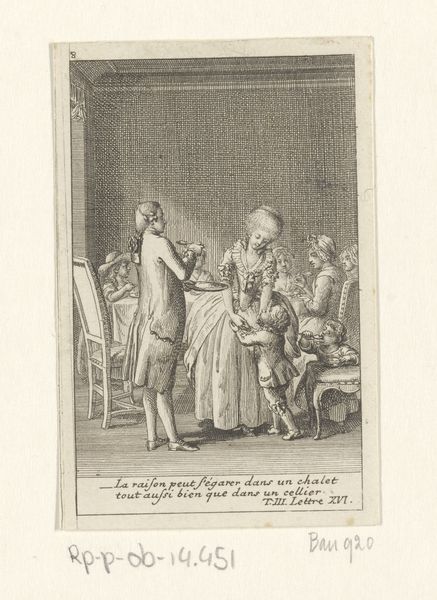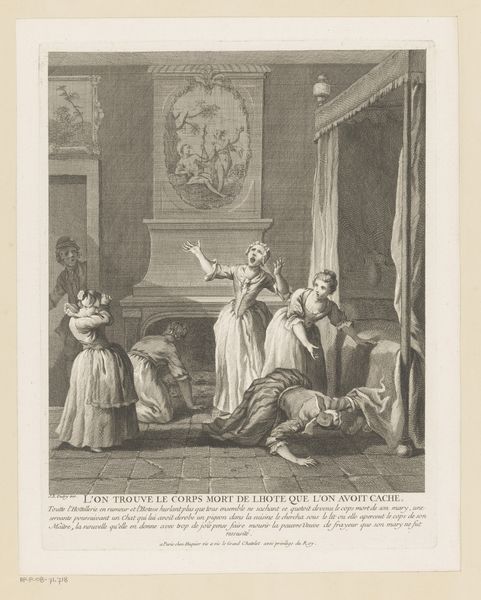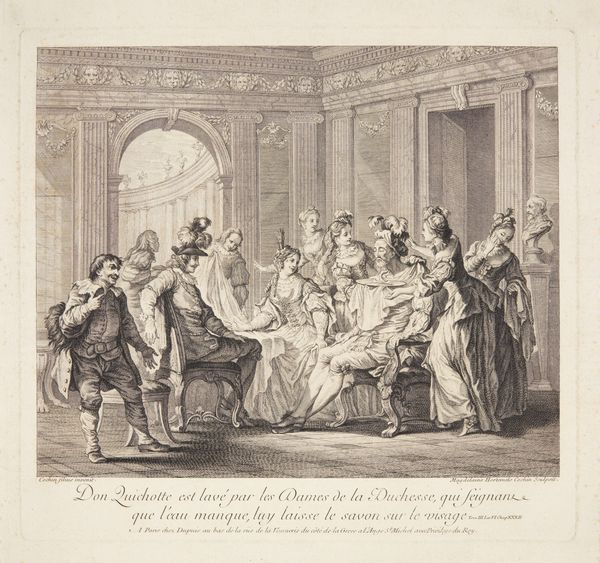
print, engraving
#
neoclacissism
# print
#
history-painting
#
engraving
Dimensions: 165 mm (height) x 104 mm (width) (plademaal)
Curator: Here we have Georg Haas's engraving, "Illustration til Don Quixote," dating from 1776-1777, held here at the SMK. What strikes you about it? Editor: It’s undeniably theatrical. The exaggerated costumes, the grand architecture... it almost feels like a stage setting, yet there is something inherently sad to the depiction of these characters. There's a clear sense of hierarchy displayed. Curator: Neoclassicism was really taking hold in Europe. This piece reflects that; consider how stage design influences artistic compositions meant for wider public consumption. But it also invites commentary on social status, doesn’t it? Haas clearly wants to portray social dynamics and political imagery by using the Quixote narrative as an accessible backdrop for the 18th-century spectator. Editor: Absolutely. I notice, too, how gender plays a crucial role. Observe the way women are presented. They're positioned as onlookers or perhaps arbiters of Quixote's, or this child's, fate? The textual portion below seems to address or even command him; it could be argued the work highlights female power structures too. Curator: Well, engravings such as these served a vital function for the circulation of literary and political ideas within a broader, literate society. Prints democratized images. Haas is inviting the viewer into a narrative moment and by this democratized act also opening it to individual interpretation within specific social contexts. Editor: Agreed. I find the child’s ambiguous expression compelling. Does this character welcome or protest this attention? And there is certainly a lot of attention focused on them. This single detail emphasizes how even innocent or powerless people become props inside someone else's theater. Curator: Ultimately, what remains is this complex intersection of aesthetics, power dynamics, and social commentary—characteristic of much of Haas's work. The theatrical is being used as a method for addressing inequalities. Editor: It also asks us, I think, to critically examine how narratives, whether in literature or life, can uphold or subvert power structures in any context. Curator: Precisely. Thanks for offering these contemporary observations. Editor: My pleasure. There’s always more than meets the eye with these narratives.
Comments
No comments
Be the first to comment and join the conversation on the ultimate creative platform.
